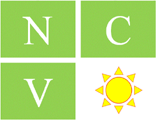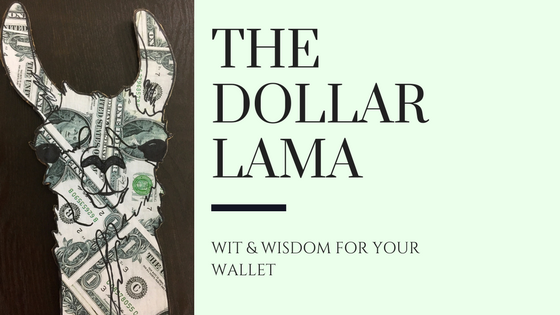Can you believe it’s 2020? This new year is special because a new decade only comes around once every ten years so, 1/1/20 starts a new year AND a new decade. If you stop and think about it, the flip of the calendar from December 2019 to January 2020 is pretty profound. This New Year’s Eve, we have the opportunity to reflect not only on the year that just passed but, to plan for the decade that lies in front of us.
For More In Depth Information
If you want to more personal finance tips and strategies, including 5 Student Loan Debt Payment Tips, enter your information and click on "Learn More!"
Check your email for FREE gift details!
For me, this process starts by looking pretty far back into the past. I’m not the only one in the reflective mood, either. Have you seen the posts on social media comparing pictures of people who were in the press in 2010 to their pictures in 2019? I’ve seen a few and they made me stop and think about where I was and how far I’ve come. For me, the last decade has been about beginning to enjoy the planning I did in my early years and fruits of my labor since I graduated from law school in 1998.
In the last decade, I’ve achieved some significant goals, personally and financially. One of the biggest financial goals I’ve achieved is paying off my student loan. I can’t tell you what a huge deal that was for me. Although, you may understand my relief if you have student loans of your own. For me, the day I paid off my student loan (I consolidated early), was almost as great as the day I got my law degree! I paid it off eighteen years after I graduated and twenty-one years after I took out my first loan. I took out $47k, paid about $29k in interest for a grand total of about $76k by the time I was done. And, I paid it off nine years early. I also never made a payment late (hint, that’s a big key to maintaining good credit AND avoiding default on your student loans).
The second biggest goal I’ve achieved is paying off all of our unsecured debt and a big portion of our secured debt. So, what does that mean? Well, secured debt is debt that has collateral. The best examples of secured debt are mortgages or car loans. A secured debt is a kind of debt where a bank lends you money to buy something and then the bank takes a security interest in the item (house or car), until you’ve made the last payment. That means if you miss a payment, they can foreclose on the loan and take the house or car you used the loan money to buy.
Secured debts are also typically amortized. That means you have a set number of payments with a set interest rate. As you make payments on your loan, you pay a set amount to the interest and the principal of the loan. Over time, the amount you pay towards interest and principal changes. So, at first you’ll be paying more towards the interest on the loan than the principal. As you make your payments over time, the amount you pay to interest shrinks and the amount you pay to principal grows.
Now, an unsecured debt is different. Examples of unsecured debts include credit card debt, medical debt, signature loans and… STUDENT LOANS! This means that the foundation of the debt is basically a contract you enter into where a lender agrees to loan you (the borrower), money and you agree to pay it back. There is no physical collateral, like a house or a car, securing the debt. That is one major difference between secured and unsecured debt. Another big difference is that while unsecured debts can also be amortized (like student loans and signature loans), many of them are not. For example, credit cards and medical debt are not. They are what we call revolving credit accounts.
Revolving credit accounts start with an agreed upon line of credit offered by the lender. If you have a credit card that you’ve ever “maxed out,” that means you’ve hit the spending limit on your credit card. With revolving credit, you are charged interest daily and it is typically compounded, or capitalized, every day. That means every day, your credit card company calculates the interest on the balance you have on that card. Then they charge you that interest and add it to your total balance. The next day, they do it again, using your original balance PLUS the interest they charged you the day before. So, now you are paying interest on interest. If you want a better explanation of this process, check out the following video I did by clicking here.
Having reflected on some accomplishments and talked about different kinds of debt, now is the perfect time to think about the decade that stretches before us. For example, what financial goals do you have for yourself for the next decade? If I can suggest one, consider trying to be completely free of unsecured debt by 2030. If you read that and thought, “not a chance,” here are a couple of other possibilities you can shoot for to make the 2020s a Debt Free Decade:
- Simply decide to make a budget and stick to it.
- Train yourself to decide if the thing you are about to spend money on sparks your joy, (yes, I am suggesting Kon Mari-ing your finances). While you may think this doesn’t apply to fixed expenses like your monthly bills, I would gently disagree. Having a roof over my head sparks joy for me every single day!
- Start with small, easily achievable goals. Remember, small actions matter. You don’t have to become a gazillionaire (that’s a technical term, LOL!), to be financially successful. Sometimes enough is a feast, thank you Alan Watts.
- Begin practicing gratitude. Every day.
- Remember that it’s not what you earn, it’s what you save. Great things can grow from the smallest of beginnings so, even if you have a dollar or two that you can save, do it.
Let’s make a commitment to make the next decade our very best decade, on our own terms and with as little debt as possible!
Happy New Year!
To learn 5 Student Loan Debt Payment Tips, enter your info and click on download. Check your email for FREE gift download!
GET INSTANT ACCESS
Download your FREE gift!

